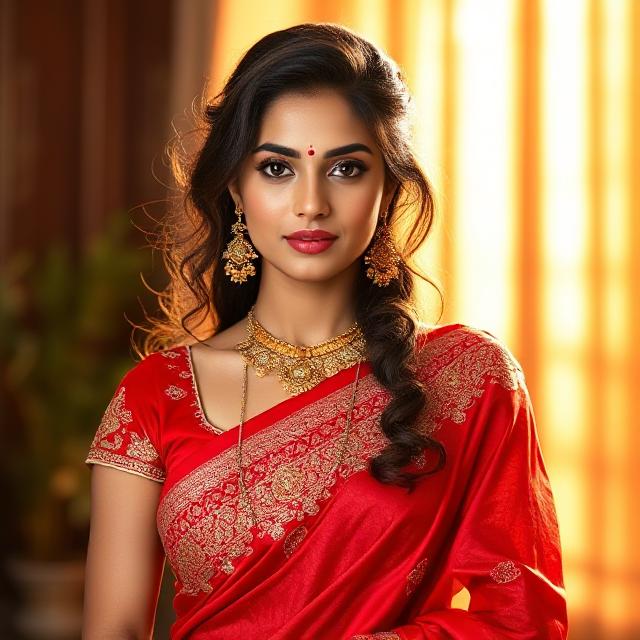Revealing India's Classic Style: An Exploration of Timeless Ensembles
India, a country with a rich cultural legacy, has a diverse fashion tapestry that has captivated people for generations. Indian design, ranging from traditional garments to modern fusion styles, has consistently celebrated hues, materials, and artistry. This article explores the classic ensembles that epitomize elegance, heritage, and style and have had a lasting impression on the Indian fashion scene.
The Timeless Saree:
A conversation on Indian clothing would be incomplete without bringing up the classic saree. The saree, which is worn in a variety of fashions throughout India, is the pinnacle of elegance and refinement. Every saree, from the colorful Kanjeevarams of South India to the delicate Banarasis of the North, narrates a tale of skill and heritage. Sarees are popular for a variety of occasions, including weddings, festivals, and formal gatherings, due to their adaptability. Indian women have always loved the saree because of its classic appeal, which has endured through the ages.
The Classic Salwar Kameez:
The Regal Lehenga Choli:
There is nothing quite like the grandeur of a lehenga choli for weddings and celebratory occasions. The lehenga choli is a picture of grandeur and wealth, adorned with elaborate embroidery, decorations, and luxurious materials like silk and velvet. This ensemble, which has its roots in the royal courts of Gujarat and Rajasthan, has developed throughout time to include contemporary silhouettes and design features. The lehenga choli, in its classic red bridal version or in more modern pastel colors, never fails to captivate brides-to-be and is a timeless favorite in Indian bridal design.
The Elegant Kurti:
Among Indian ladies of all ages, the modest kurti has been a fashion staple in recent years. The kurti is the ideal blend of heritage and trendiness thanks to its cozy design and countless style options. The kurti is a versatile option for everyday wear since it can be dressed up or down for different situations whether paired with leggings, palazzos, or jeans. The kurti is a wardrobe staple for modern Indian women because it displays the vast diversity of India's textile legacy, whether it be through the classic block prints of Jaipur or the futuristic designs of Mumbai's fashion designers.
The Chic Sari Gown:
The sari gown has become a popular option for stylish women looking to make a statement in the world of fusion dress. Offering the best of both worlds, this hybrid costume combines the elegance of a saree with the ease of a gown. The sari gown is ideal for red carpet events, cocktail parties, and high-profile gatherings because to its elegant drapes and sophisticated silhouette. The seamless elegance and refinement of the sari gown, whether it is from the minimalist designs of modern designers or the classic motifs reinterpreted in a fresh way, never fail to enthrall fashion fans.
Conclusion:
These classic ensembles, which capture the spirit of tradition, grace, and flair, stand out as enduring favorites among the rainbow of Indian fashion. Every combination, from the elegant saree to the majestic lehenga choli, celebrates the diversity and inventiveness of India's rich cultural past. These classic looks serve as a constant reminder of India's fashion history, encouraging upcoming generations to embrace innovation and originality in addition to their cultural heritage.

